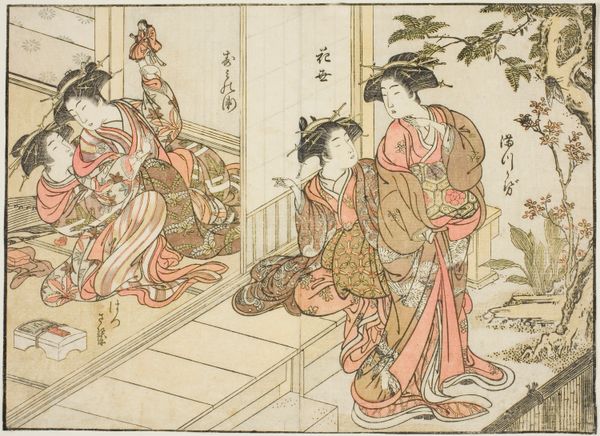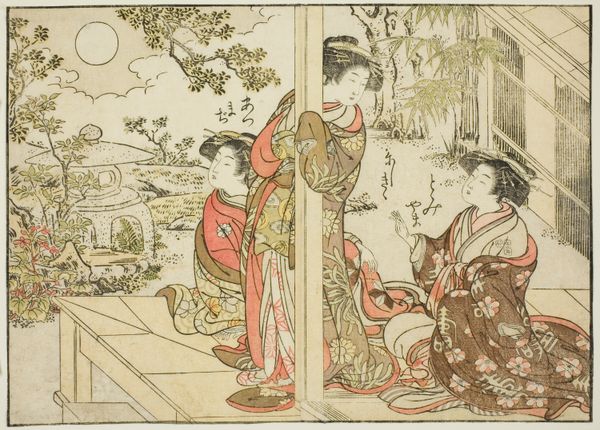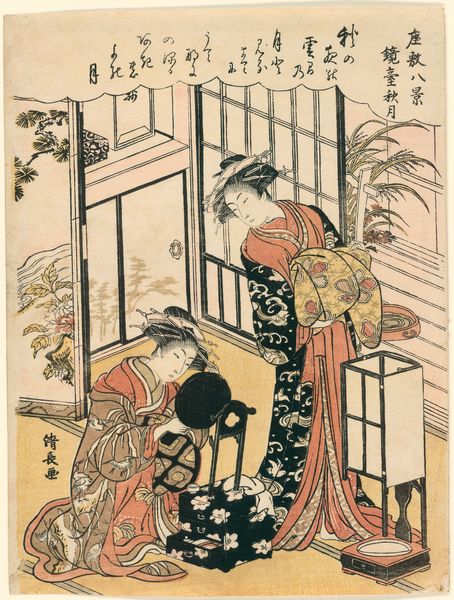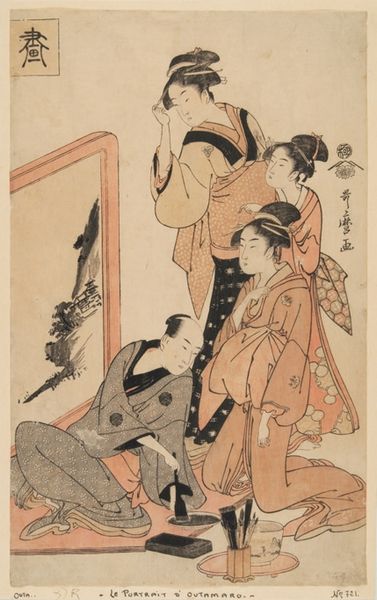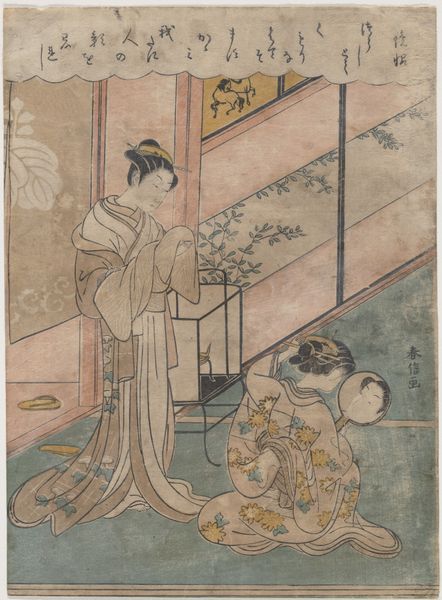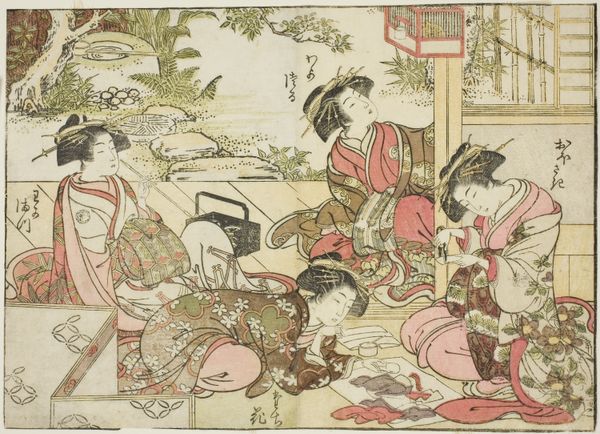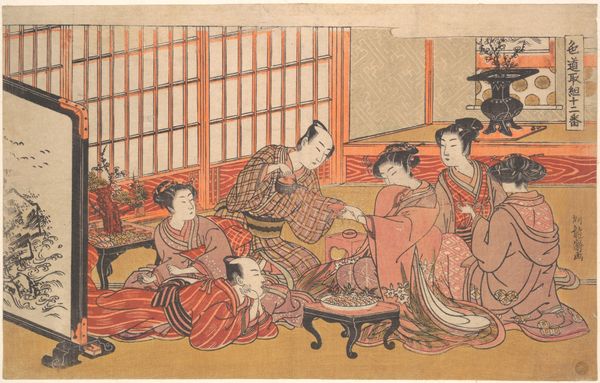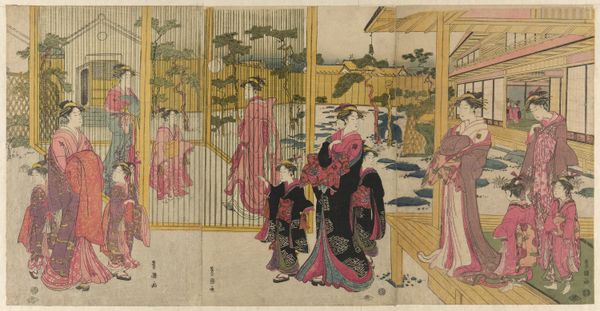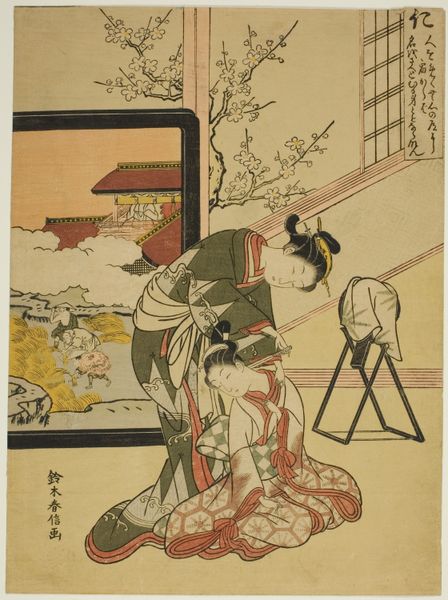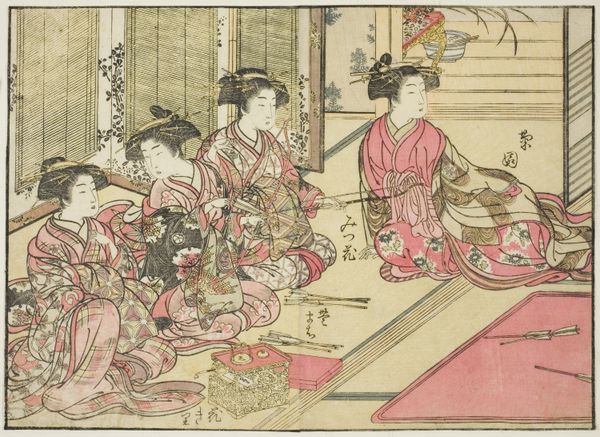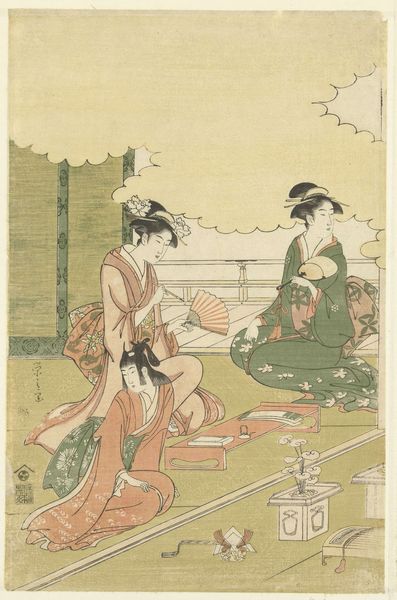
Courtesans of Tsuruya, from the book "Mirror of Beautiful Women of the Pleasure Quarters (Seiro bijin awase sugata kagami)," vol. 2 1776
0:00
0:00
print, woodblock-print
#
portrait
# print
#
asian-art
#
ukiyo-e
#
figuration
#
woodblock-print
#
genre-painting
Dimensions: 8 7/8 × 11 7/8 in.
Copyright: Public Domain
Editor: This is Kitao Shigemasa's "Courtesans of Tsuruya," a woodblock print from 1776. I'm immediately drawn to the intricate patterns and how they define the figures and their space. The arrangement feels so deliberate. What strikes you when you look at this, from a formal perspective? Curator: Consider the compositional structure first. Notice how the artist uses a shallow depth of field, almost compressing the space. This flattens the image and emphasizes the surface design. The figures are meticulously outlined, and each pattern within their kimonos operates as a distinct visual element. Do you observe any interplay between these patterns and the surrounding natural elements like the bamboo or maple leaves? Editor: Yes, the patterns seem to echo the natural motifs, creating a visual harmony. Is it about decoration or perhaps the role of beauty? Curator: Not solely, perhaps. While undeniably beautiful, these choices create a dialogue between artifice and nature. The curvilinear patterns of the kimonos contrast with the rigid verticals of the bamboo. Consider how Shigemasa utilizes line and form to create a visually engaging, albeit artificial, world. It isn’t necessarily about the literal interpretation, but the dynamic tensions at play. Editor: So it's about dissecting these visual relationships and less about, say, the story of the courtesans themselves? Curator: Precisely. While cultural context provides additional layers of meaning, the power of the image rests within its formal language. Notice, too, how the composition is carefully constructed, leading the eye through the various elements of the picture plane through repetition of form, texture, and line work, resulting in an image of great harmony and visual interest. Editor: I see it so differently now! Thanks to the formal qualities, it’s definitely not only about pretty women. Curator: Indeed. By observing the careful interplay of line, form, and texture, we gain deeper insight into Shigemasa's skill.
Comments
No comments
Be the first to comment and join the conversation on the ultimate creative platform.
